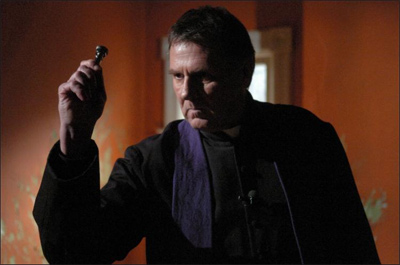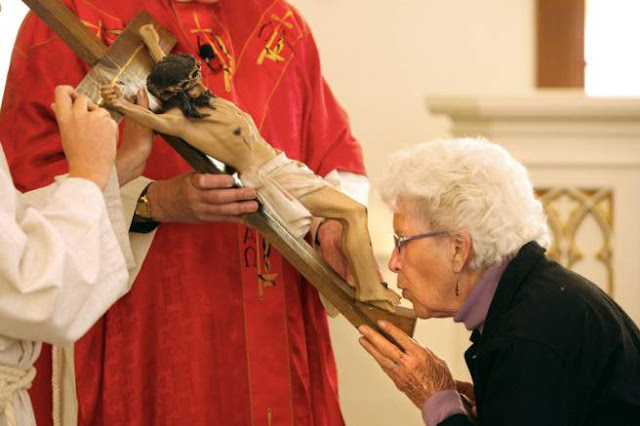While sitting in my dentist's waiting room, I read this month's Fortune article by Peter Elkind about the Blue Bell ice cream scandal. Here's what I think.
Despite its marketing image as a "small town, family business", Blue Bell is actually the nation's 3rd-largest ice cream producer. Deception is their middle name, apparently. That's Big Business. They knew about a listeria bacteria problem in their plant for two years... without addressing the issue. Really??! A food provider who shirks the responsibilities of cleanliness and food safety? Did they have the potential money to clean it up? Yes! According to the article, their annual sales have grown to $880 million. So why ignore the problem?
The article said that on January 28 of this year, South Carolina state inspectors found listeria bacteria in two products at Blue Bell's plant in Brenham, Texas. That's serious. That bacteria causes listeriosis, which causes 1,600 serious infections a year, including 260 fatalities. It is the third-leading cause of food borne death in America. Again, why would a wealthy company ignore the problem? How could such a problem exist for TWO YEARS before official inspectors noticed it?
Next, the Center for Disease Control matched Blue Bell's bacteria to an outbreak at a Kansas hospital, involving 3 deaths. Four of the patients had drunk Blue Bell milkshakes. Further tests linked the company to listeriosis cases, dating back to 2010! Those are only the "reported" cases!
Feb 13, Blue Bell executives learned of the official report by the SC inspectors. Without any public announcement that they had sold a tainted product, they quietly began retrieving 10 product lines made in Texas. Apparently, in our wonderful nation, neither the Food & Drug Administration nor state regulators insisted on "disclosure" to the public. That should be fixed immediately.
What the f*ck is the point of having tax-paid FDA and state-level inspectors if THEY don't warn the tax-paying public?! Sounds like treason to me. Such laxity! Any such health concern should be announced publicly immediately. Any such disregard for health should be punished severely. After all, the virus existed long before inspectors caught it--meaning the company's own people should've spotted it first.
March 9, Blue Bell learned of the link between its listeria bacteria and the deaths in Kansas. The next day, it finally stopped production in its infected Texas plant.
March 13, Blue Bell announced a recall of "a limited amount" of snacks with "a potential listeria problem" that "in no way involved its other products". The company should never have been allowed to publicly announce such lies.
March 22, Kansas authorities told Blue Bell that they found more listeria at that hospital, in another product. That product had been made at the company's Oklahoma plant. A second plant, in another state, with the SAME PROBLEM. That's company-wide negligence.
April 3, the CDC linked the bacteria from Oklahoma with 5 listeriosis cases. Blue Bell suspended manufacturing in Oklahoma.
April 6, the CDC recommended that consumers "not eat" any product made at the Oklahoma plant. That should've been the responsibility of the company. The same day, Blue Bell did announce that it was "withdrawing" everything made at that plant, insisting, "It is important to note that these products HAVE NOT BEEN RECALLED." Really???
April 7, the FDA finally notified Blue Bell of bacteria in another flavor made in Oklahoma.
April 20, after more listeria was found in tubs of Chocolate Chip Cookie Dough ice cream made in Texas, Blue Bell finally recalled all its products. CEO Paul Kruse apologized and was "heartbroken". Sounds like he was trying to keep that "family-run small-town" image. In reality, Blue Bell knew of its listeria problem two years earlier!
The FDA released inspection reports showing that the company found the bacteria in its Oklahoma plant, on surfaces such as floors and catwalks, on 17 occasions beginning in March 2013. Despite this, the FDA revealed that Blue Bell hadn't followed up "to identify sanitation failures and possible food contamination", taken proper steps to root out the problem, or inform the agency of its findings. FDA inspections of multiple plants, starting in March found not only listeria but also condensation dripping from machinery into ice cream and ingredient tanks; poor storage and food-handling practices; and failure to clean equipment thoroughly.
Well, that certainly shows what a lax regulatory system our country has! What good did the FDA do, by letting the company stay open? Any food provider--especially of such wealth-- who irresponsibly, and thus harmfully, neglects public safety should be shut down permanently. It speaks to the decision making process at the highest level of the company. Such corporate disdain for the consumer reminds me of the film "Food Inc."
How did the "family run" company respond? The corruption of the executives was paid for by the employees. Blue Bell's CEO announced that it was laying off half of its nearly 4,000 workers, furloughing the other half... to help pay for the necessary overhaul.
The Wall Street Journal announced that billionaire Sid Bass loaned $125 million to Blue Bell, otherwise the company (founded in Texas) might've gone under. I had never heard of Bass, but I had a hunch that he was a fellow Texan. Looking him up online... he is. Another "good old boy" to the rescue.
Blue Bell's PR consultant, Gene Grabowski, defends the company's approach, "In my playbook, you apologize sincerely once and then you move on." Are you f*cking kidding me? Sickness and death because of widespread / rampant bacteria growth in your dairy factories, and you tried to cover it up/shirk public responsibility (unlike Johnson & Johnson during their 1980's Tylenol tampering). Blue Bell's PR attitude reminds me of the BP Oil CEO's arrogant attitude, right after the 2010 BP Oil Spill (explosion) in the Gulf of Mexico. BP CEO, Tony Hayward said, "There's no one who wants this over more than I do. I would like my life back"... after his oil killed 11 people and spewed 100 million gallons of toxic oil into the Gulf. Hayward also said on Sky News TV on 5/18/10, "I think the environmental impact of this disaster is likely to have been very, very modest."
Bass' support reminded me of what "good ol' boy" Texas Governor Rick Perry said in support of the BP spill, "From time to time, there are going to be things that occur that are acts of God that cannot be prevented." What planet are you living on?
Sure, the average consumer may act in uneducated and unhealthy ways. I'm certain that ignorant ice cream fans will cheer new waves of Blue Bell product. Yet, I agree with Craig Helberg, a food safety expert, "If bacteria is persisting in a plant, one of the mandates is to root it out. If you don't it's pretty clear you've failed to do your duty to your customers." I wish that the customers' tax-paid regulators and inspectors did a harsher job on such companies.
For example, the FDA is supposed to "watch" food producers. At least according to the Food, Drug & Cosmetic Act. Yet, ingredient lists on products fail to include pesticides or growth hormones... which are in/on the ingredients!
The FDA allows GRAS (Generally Regarded As Safe), which allows companies to omit ingredients that are considered safe. That doesn't help folks with food allergies.
The things that ARE listed are often disgusting. Look at this Easter candy wrapper, and you can really tell that the Corn and Wheat industries greatly influence America...

The FDA does a poor job of policing "food adultering". According to this month's issue of WebMD, Olive Oil listed as 100% sold in America is often thinned out with nut, soybean, corn, vegetable or canola oil. More than three-fourths of honey sold in U.S. stores isn't what manufacturers claim on the label. 91 million pounds of honey enters the U.S. illegally from other countries. Impure honey contains pesticides and antibiotics. To save money, companies add cane, corn or beet sugar or rice syrup and high-fructose syrup. It's no secret to Lewis and I that even seafood listed in stores and restaurants is fraudulent. Fish labelled as red snapper can really be swordfish, cod, yellowish or mako shark. Producers add coloring to make the fish seem fresher and mask visual indicators that the product is old. Pricey pomegranate juice frequently contains blends of cheaper apple and grape juice... yet it's still priced 5x more than apple/grape juice. So much for the FDA, and the USDA (US Dept of Agriculture), which regulates meat and dairy only. Such waste of taxpayer money and potential (which, in turn, harms the taxpayer health). Is that treason? Maybe the public should "remove" officials when they fail to do their jobs, fail to prevent what was within their control (if they exerted themselves) and failed to fix problems.
It would also be nice if the media did a better job informing its viewership. Alas, such are "ideals" when the government is "in step" with its populous, instead of mostly just with Big Industry.
For example, California was supposed to introduce a statewide ban on non-biodegradable plastic grocery bags. Yet, the plastics industry secured enough pressure to ban the ballot. For contrast, Denmark began taxing bag users in 1994. By last year, it had the lowest plastic bag usage in Europe. Success CAN be achieved!
























































































































